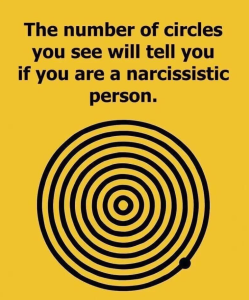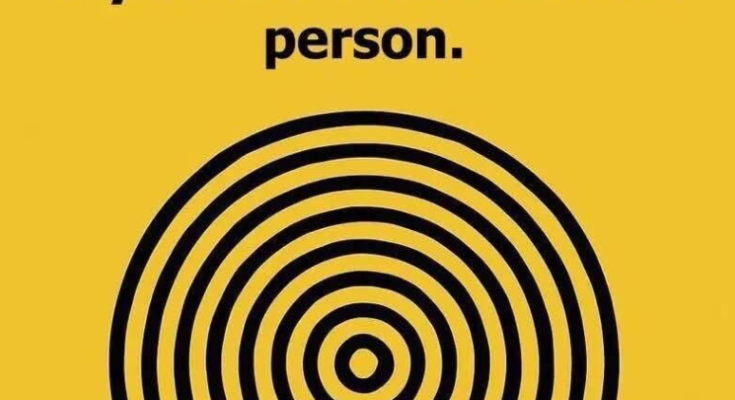
“How Many Circles Can You Spot?” — A Mirror Made of Spirals
It begins with a swirl. A hypnotic image, black and white, deceptively simple. At first glance, it looks like a spiral—an endless tunnel pulling you inward. But look closer. The spiral is an illusion. Hidden within it are perfectly round circles, overlapping, vanishing, reappearing. The challenge: count them.
And then the twist—your answer might say something about you.
This viral optical illusion has captivated millions. Not because it’s hard to solve, but because it promises something deeper: insight. A glimpse into your personality, your cognitive style, maybe even your emotional core. It’s not just a game. It’s a mirror.
The Illusion That Confused Thousands
The image exploits a classic Gestalt principle: our brains crave patterns. When alternating black-and-white bands are arranged just right, they confuse our edge detectors. Circles become spirals. Spirals become stories. Our visual cortex tries to make sense of the chaos, grouping lines into familiar shapes—even when those shapes aren’t really there.
This is more than a trick. It’s a test. And it’s gone viral because it taps into something timeless: our need to understand ourselves.
The Circle Count and What It “Means”
Here’s the breakdown that’s been circulating online:
- Fewer than 7 circles: You’re a big-picture thinker. You don’t get lost in the details. You focus on the goal, the vision, the horizon. This can make you confident—sometimes too confident. You may enjoy being the center of attention, and some say this count correlates with narcissistic traits. But it also suggests charisma, leadership, and a strong sense of self.
- 7 to 9 circles: You strike a balance. You see both the forest and the trees. You’re emotionally intelligent, self-aware, and grounded. You enjoy recognition but don’t crave it. You can zoom in when needed, but you never lose sight of the whole.
- 10 or more circles: You’re detail-oriented. You notice the subtle shifts—the tone in someone’s voice, the change in lighting, the fine print. You’re reflective, modest, and often focused on quiet achievements. You don’t need applause. You seek understanding.
Of course, this isn’t science. It’s storytelling. But that’s what makes it powerful.
Why We Trust the Trick
Why do we believe a picture can reveal our personality?
Because illusions bypass logic. They speak to something primal. They remind us that perception is not passive—it’s active. Our brains don’t just record reality. They interpret it. And sometimes, they get it wrong.
That wrongness feels intimate. Vulnerable. Human.
We share these illusions not just to solve them, but to be seen. To say, “This is how I see the world. What does that say about me?”
The Meme as Mirror
This illusion isn’t just a test. It’s a meme. And memes are modern rituals. They spread because they resonate. Because they offer a shared experience. A communal gasp. A collective “aha.”
In Cambodia, students gather around the image, counting aloud, arguing over shapes. In Berlin, a therapist uses it to start conversations about attention and anxiety. In New York, a mural appears overnight: a swirl of circles, each labeled with a different emotion.
The illusion becomes a canvas for projection. Not just of personality, but of culture.
The Psychology of Seeing
Optical illusions like this one reveal how our brains process contrast, edges, and depth. They show us that vision is not just about the eyes—it’s about the mind.
- Literal illusions: What you see isn’t what’s there. Like the duck-rabbit image, where perception flips depending on context.
- Physiological illusions: Your brain gets overstimulated. Like the grid illusion, where grey dots appear and disappear.
- Cognitive illusions: Your assumptions shape your reality. Like the Müller-Lyer illusion, where lines of equal length seem different.
This circle illusion blends all three. It tricks your eyes, your brain, and your beliefs.
The Ritual of Counting
There’s something sacred about the act of counting. It slows us down. It forces us to look. To notice. To reflect.
In a world that rushes past details, this illusion invites stillness.
People count alone. Then they count together. Then they compare. The number becomes a badge. A story. A self-portrait.
“I saw 6.” “I saw 12.” “I saw something else entirely.”
And in those differences, we find connection.
The Communal Archive
Inspired by the illusion, a digital archive emerges: people upload their counts, their interpretations, their reflections.
Some write poems. Some draw their own illusions. Some share stories of how they learned to see—through trauma, through art, through love.
The archive becomes a living mirror. Not of circles, but of selves.
The Unfinished Sentence
“How many circles can you spot? It might say something about you…”
But what does it say?
Maybe that you’re curious. Maybe that you’re tired. Maybe that you’re ready to see something new.
The real insight isn’t in the number. It’s in the noticing.
In the pause. In the gaze. In the moment when perception becomes reflection.

